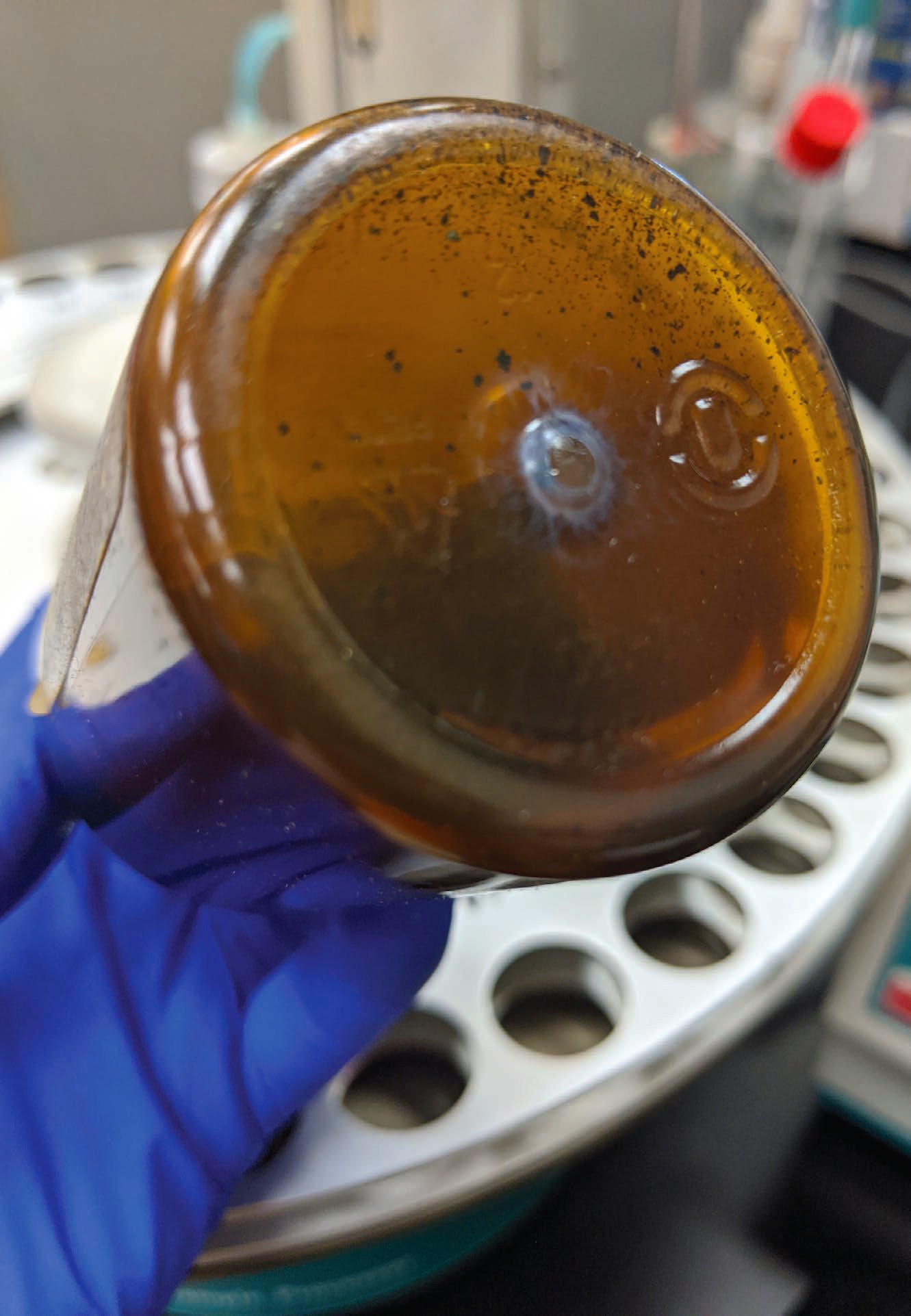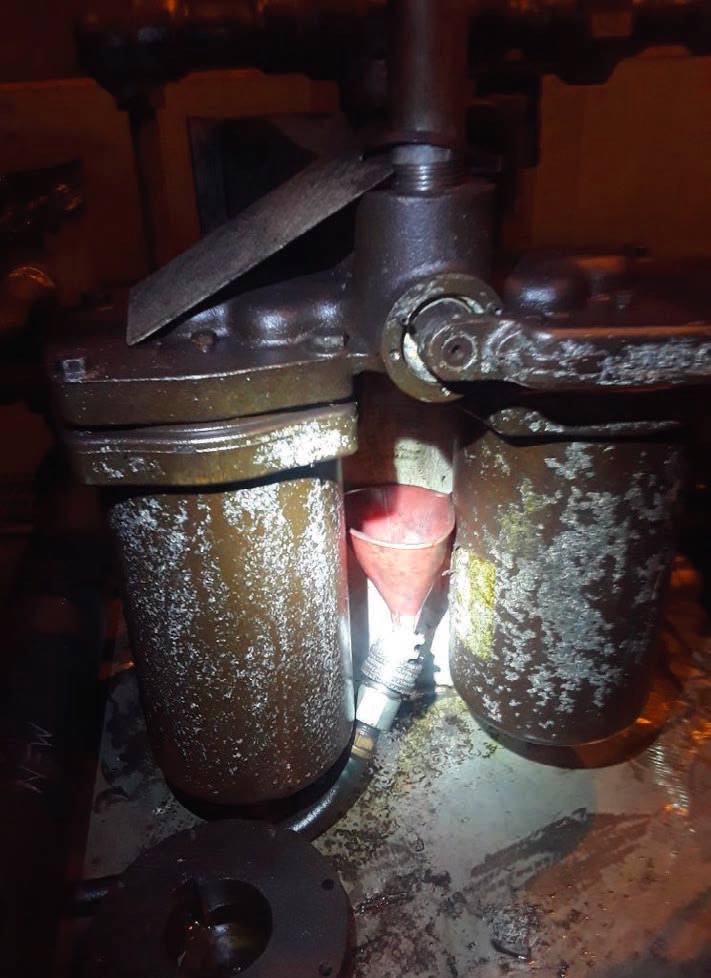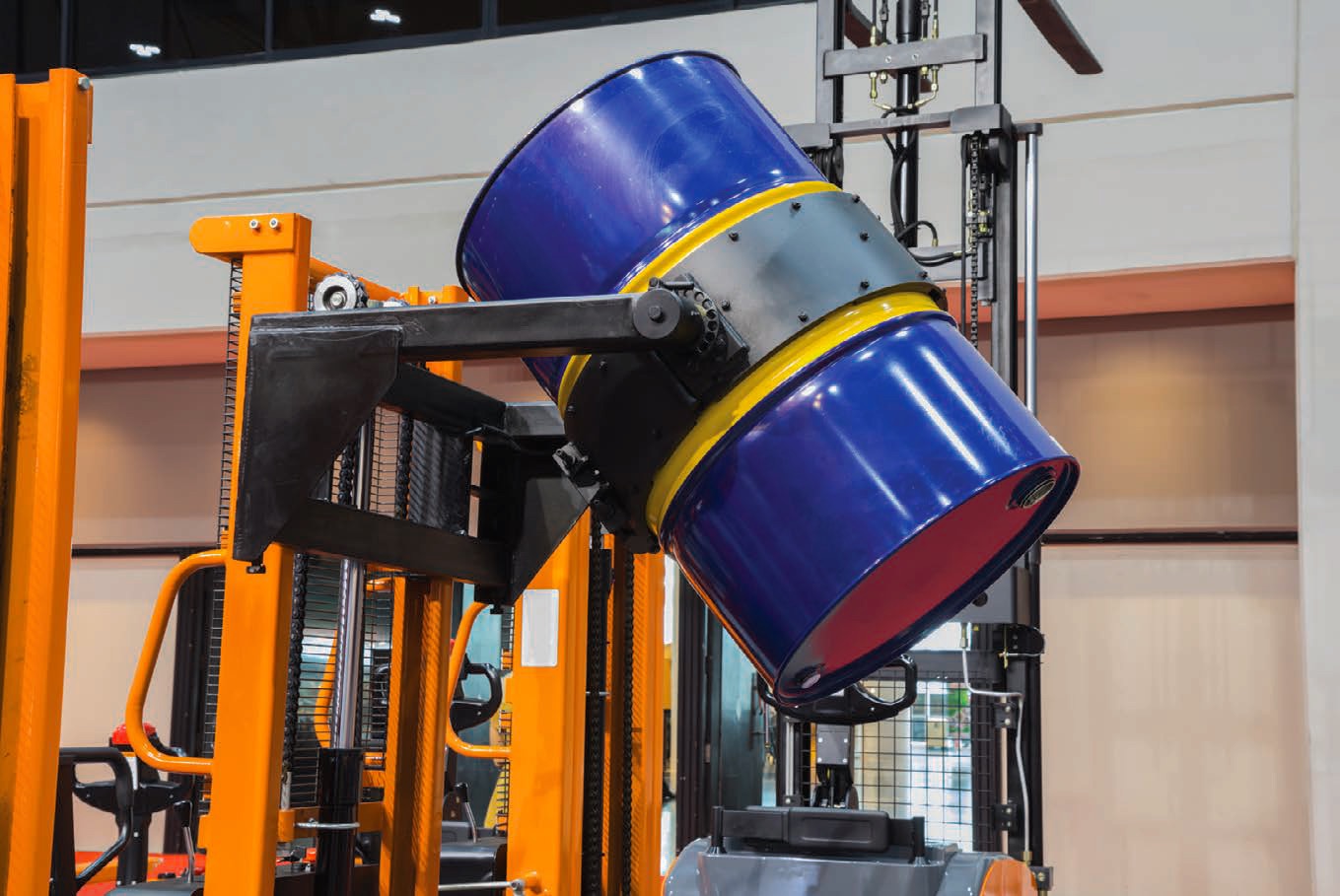Avoiding lubricant contamination
Jeanna Van Rensselar, Senior Feature Writer | TLT Best Practices September 2021
Following best practices will avoid serious contamination issues.
KEY CONCEPTS
•
Lubricant suppliers, distributors, oil analysis labs and end-users each have their part to play in ensuring that the oil is clean when it is introduced into the equipment and stays clean during operation.
•
There are four main contamination routes: lubricant production, storage/transport, application and lubricant changeover.
•
Lubricant quality and price ultimately have no effect on contamination—it is a universal destroyer.
Contamination of gear lubricants is a primary concern of maintenance personnel across industries—it has the potential to seriously impact lubricant performance, gear protection and the drain interval. This contamination comes in many forms, such as fluid, particulate (
see Figure 1), reactive deposits and anything that alters the chemical composition.
 Figure 1. Hard particulates in gear oil. Figure courtesy of TestOil.
Figure 1. Hard particulates in gear oil. Figure courtesy of TestOil.
Matthew Benz, director of sales, Carson Team, says, “The lubricant product family doesn’t make much of a difference as far as susceptibility to contamination is concerned. Poorly packaged or stored products or a poor transfer process that may expose the product to contamination are more significant factors than product type. Price or even quality (synthetic versus conventional) are not significant factors for cleanliness. More important is how the product itself is handled and transported and the environment it is stored in.”
Consequences of contamination
TestOil field/data analysts that contributed to this article as a group include Frank Rex, Dwon Ruffin and Matt McMahon. They are referred to as
TestOil analysts throughout the article. They explain that the consequences of contamination can be dire. “Contamination can cause premature failure of gears and bearings. Depending on the process, excessive vibration and/or heat caused by failing equipment also may affect the product. Other consequences include machine failure, excessive gear teeth wear and corrosion.”
The drain intervals can be impacted by different types of contamination or operating conditions. “Contamination can be in the form of ingressed particulates, either abrasive or chemical, that pass through intake filters/sump breathers, or it can be moisture from air dew point or storage condensation, Benz explains. “Additionally, engine applications can experience fuel dilution. Coolant leaks also are contaminants that impact service interval life of a lubricant or drain interval. Extending drains doesn’t of itself create more contamination, but having contamination will shorten your drains.”
According to TestOil analysts, one of the factors affecting the consequences of contamination that is often overlooked is machine design. “There’s a lot of variation in machine design. Some machines will be very tolerant of contamination, and some will not; it depends on the specific contaminant.”
Sources of contamination
According to STLE member Philip Ma, technical marketing manager at BASF, there are four main contamination routes. These routes and recommendations for avoiding/mitigating issues include:
•
Contamination during lubricant production. Different lubricants may be produced using the same container. Lubricant producers should follow proper flushing procedures to avoid/reduce cross contamination.
•
Contamination during storage/transport. Moisture can get into the lubricant through the breather. A high moisture level could affect lubricant performance in terms of wear, rust and hydrolytic stability. Putting a dryer at the breather to adsorb moisture, depending on the application requirement, can avoid the issue.
•
Contamination during application. Human error can occur while adding or topping off different lubricants during maintenance. The worst case scenario is two lubricants that are not compatible, such as a polyalkylene glycol (PAG) and a polyalphaolefin (PAO). Putting a warning label on the gearbox indicating what oil is required is a simple way to avoid this. In addition, moisture/dust may get in the lubricant through the breather during application, which can result in gear surface damage. Putting a filter at the breather to block the dust particles, depending on the application requirement, could avoid this.
•
Contamination during lubricant changeover. When used lubricant reaches the condemnation limit and it needs to be changed, various amounts of residue from the used lubricant may not get drained and will contaminate the new lubricant. This is a bigger issue if the two lubricants are not compatible. Following a proper flushing procedure will avoid this.
The TestOil analysts are regularly out in the field and are able to observe, firsthand, the following contamination and probable causes:
•
Unsealed hatches and ports. Many hatches, while fastened, are not well sealed.
•
Leaking seals on shafts. This can be a prime source for contamination from process fluids and water as well as dust and dirt (
see Figure 2).
•
Unfiltered oil additions. This is through additions using contaminated containers or through contaminated oil from poor storage practices.
•
Incompatible oil additions. The addition of the wrong lubricant for the system.
•
Water ingression. This can enter from the environment and/or during machine wash down.
•
Solid contaminants. These invade through open hatches and poor breathers.
 Figure 2. Leak being funneled back into the machine. Figure courtesy of TestOil.
Figure 2. Leak being funneled back into the machine. Figure courtesy of TestOil.
“Most common issues are related to starting with ‘dirty oil,’ meaning the product delivered to them is out of spec for their equipment before they even receive it,” Benz says. “Many of the specs ask for a cleanliness code that is cleaner than standard new delivered oil. The environment where the product is kept would be the second most common issue; many times the storage for the product and the environment around the storage is not maintained in a way to reduce contaminants.”
Benz cites, as an example, a tote of oil in a lumber mill. The tote may be kept in an area where sawdust is pervasive in the air and builds up on the storage container. “Without proper storage filtration and a plan to keep the environment clean, it is very difficult to keep the integrity of the product in line,” he says.
A final issue, Benz mentions, is transport from storage to the equipment. “It must be done in a way that does not contaminate the product further,” he says.
Identifying contamination
Some types of contamination can be identified visually or audibly—especially if the contamination is pervasive. “Increased heat, vibration and noise are all external clues that a lubrication problem may exist,” TestOil analysts say. “Unfortunately, at this point, equipment failure has already begun. Leaking seals also may be an indication of contamination, but other factors such as equipment misalignment may also cause seal failure. There may be water present—if sampling from the drain, water will exit before the oil—and there may be foam present, which would indicate contamination or some mechanical issue with the machine. In the sample itself, visual indications of contamination would be a clear separation in the sample bottle, it would show a different color than other samples, the lubricant would appear thinner or thicker than expected, and there may be formation of abnormal sludge.”
When there is an incident and suspected contamination as a result, the oil should be sent to a lab immediately. According to TestOil analysts, “Whenever an event occurs that may have contaminated the oil—such as increased heat, vibration and noise, possible water or process fluid contamination or incorrect lubricant additions—the fluid needs to be tested.”
According to TestOil analysts, the following tests would typically be conducted in the lab to determine:
•
If the gear oil has been contaminated: depending on the type and operating conditions of the gearing: viscosity, Fourier-transform infrared spectroscopy (FTIR), particle count, acid number, ferrous wear, analytical ferrography and water concentration
•
How extensive the contamination is: Karl Fischer titration, particle count, analytical ferrography
•
The material makeup of the contamination (assuming solid contamination): analytical ferrography and material identification analysis.
Regular lab testing should be able to identify gradual contamination before it becomes a problem.
 Researchers recommend equipment audits to ensure that lubricants stay clean during storage and operations.
Avoiding contamination
Researchers recommend equipment audits to ensure that lubricants stay clean during storage and operations.
Avoiding contamination
The lubricant manufacturers take steps to mitigate contamination in their products. He explains, “Additives are improving operating service life extension for both the lube film and to address secondary processes that impact exhaust recovery and emission recovery components. Some manufacturers have improved the blending and handling processes through improved filtration between transfer steps. Many provide pre-post filtration steps between product blending and product fill stations. At the distribution level, some suppliers will work with distributors to offer a program that provides customers with lubricant product at a target ISO cleanliness code prior to delivery.”
Benz adds, “We work with our customers to review and apply reliability best practice guidance and product referrals beginning with lube rooms, lube product labeling, lube room storage cleanliness management and fluid transfer products to help assure delivered cleanliness into their facility through to the equipment fill point, etc.”
According to TestOil analysts, contamination can be minimized or even avoided through:
•
Ensuring that all hatches and ports are sealed
•
Adding breathers or expansion chambers to gearboxes
•
Proper alignment of operating equipment (to extend seal life)
•
Adding oil sample ports to the equipment if they are not already present
•
Routine oil sampling
•
Maintaining clean dry oil
•
Use of proper transfer containers
•
Labeling and color coding
•
Training staff on lubrication fundamentals
•
Adhering to proper oil handling and storage procedures.
It’s also important to ensure that the new lubricant is not contaminated by residue from the old lubricant during changeover. “After addressing the source of the contamination, maintenance personnel should clean and flush before filling with new lubricant,” TestOil analysts advise. “There should be multiple flushes with new product and proper draining practices to allow complete evacuation of the fluid. A final caveat is to ensure that the flushed oil is not reused—yes, people do this.”
As far as service fill, Benz advises, “The basic step is to make sure to use clean equipment in the transfer and to label that equipment to ensure product integrity. The storage container also should be filtered and labeled.”
He adds, “End-users should be sure that the right product is used in the right application; be sure lubricant cleanliness is managed and certified clean from the time it is delivered to their facility all the way through the process (storage, transfer, use). Having an expert do a best practices analysis and creating a plan for cleanliness is a key component.”
Some lubricant suppliers leverage an advanced system to clean and certify lubricants before delivery. “We also work with the end-user to ensure they have a facility and plan to keep the product clean until it enters the equipment,” Benz explains. “Other items that can help with the reduction of contamination are packaging improvements, storage vent protection, product fill point protected by inline series filtration/separation, additional kidney-loop polishing circuits to keep fluid in motion and polish to a dry/clean dispense cleanliness code target that make a difference where the customer can manage contamination avoidance.”
Benz adds, “As a supplier, you can’t really deal with contaminants; they require changes from the customer. The simplest way I can put it is, you have to control all the air the product comes into contact with.”
Conclusions
Both Benz and TestOil analysts recommend equipment audits to ensure that lubricants stay clean during storage and operations. For Benz, this means working with the end-user’s reliability program and maintenance process to recommend steps and components to help assure lubricant life extension. “This should be a part of the facility’s reliability training, education and certification programs,” he says. “Starting with a clean lubricant and keeping it clean is much easier and more time efficient.” TestOil analysts agree, adding that regular oil analysis, along with proper corrective action, will help head off most contamination issues before they become a problem.
Jeanna Van Rensselar heads her own communication/public relations firm, Smart PR Communications, in Naperville, Ill. You can reach her at jeanna@smartprcommunications.com.